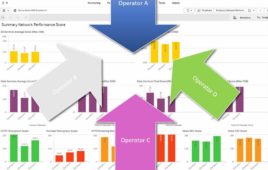This article has been updated to include comment from T-Mobile.
AT&T has come out firing against a T-Mobile proposal for the FCC’s upcoming incentive auctions for 600 MHz spectrum. The carrier is saying T-Mobile’s “Dynamic Market Rule” plan would result in failure to generate sufficient revenue and “almost certainly doom the auction.”
In a blog post that points to an economist paper AT&T filed with the FCC, AT&T Vice President of Federal Regulatory Joan Marsh argues that low-band spectrum does not require additional screening from the Commission.
The post and the paper both assert that T-Mobile’s plan would burden the auction process with unnecessary complexity and could block AT&T and Verizon from meaningfully participating in the auction.
T-Mobile Vice President of Federal Regulatory Affairs Kathleen Ham responded to our request for comment with the following statement: “Without adequate competitive safeguards, there is nothing to stop the largest two carriers from walking away with all the 600 MHz low-band spectrum. Such an outcome would be bad for consumers and bad for competition in the wireless broadband marketplace. The two dominant carriers already control near eighty percent of low-band spectrum. Reasonable spectrum concentration limits at auction, combined with sound auction-design features such as the Dynamic Market Rule, will promote competition, encourage innovation and increase consumer choice, without harming auction revenue.”
Under T-Mobile’s plans for the auction, spectrum aggregation limits would be put in place at the beginning of an auction. If insufficient revenue results from the initial round of bidding, the limits would be relaxed to some degree and the auction would begin anew until the FCC’s revenue targets are met.
AT&T argues that the spectrum aggregation limits could result in spectrum blocks too small for LTE deployment and therefore not worth bidding on.
The FCC spectrum incentive auction is intended to generate revenue to alleviate national debt and help to fund a nationwide first responder network termed FirstNet.




